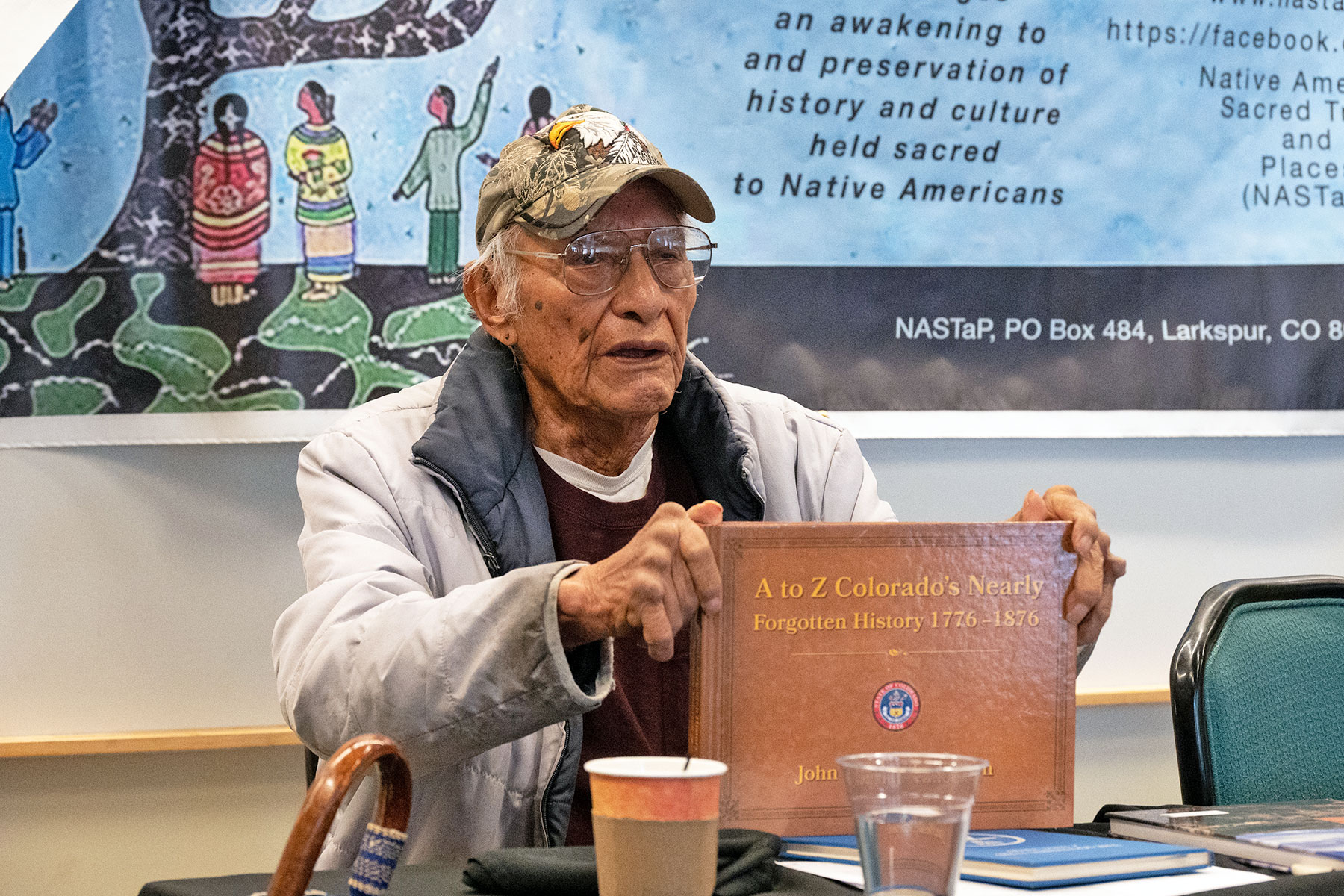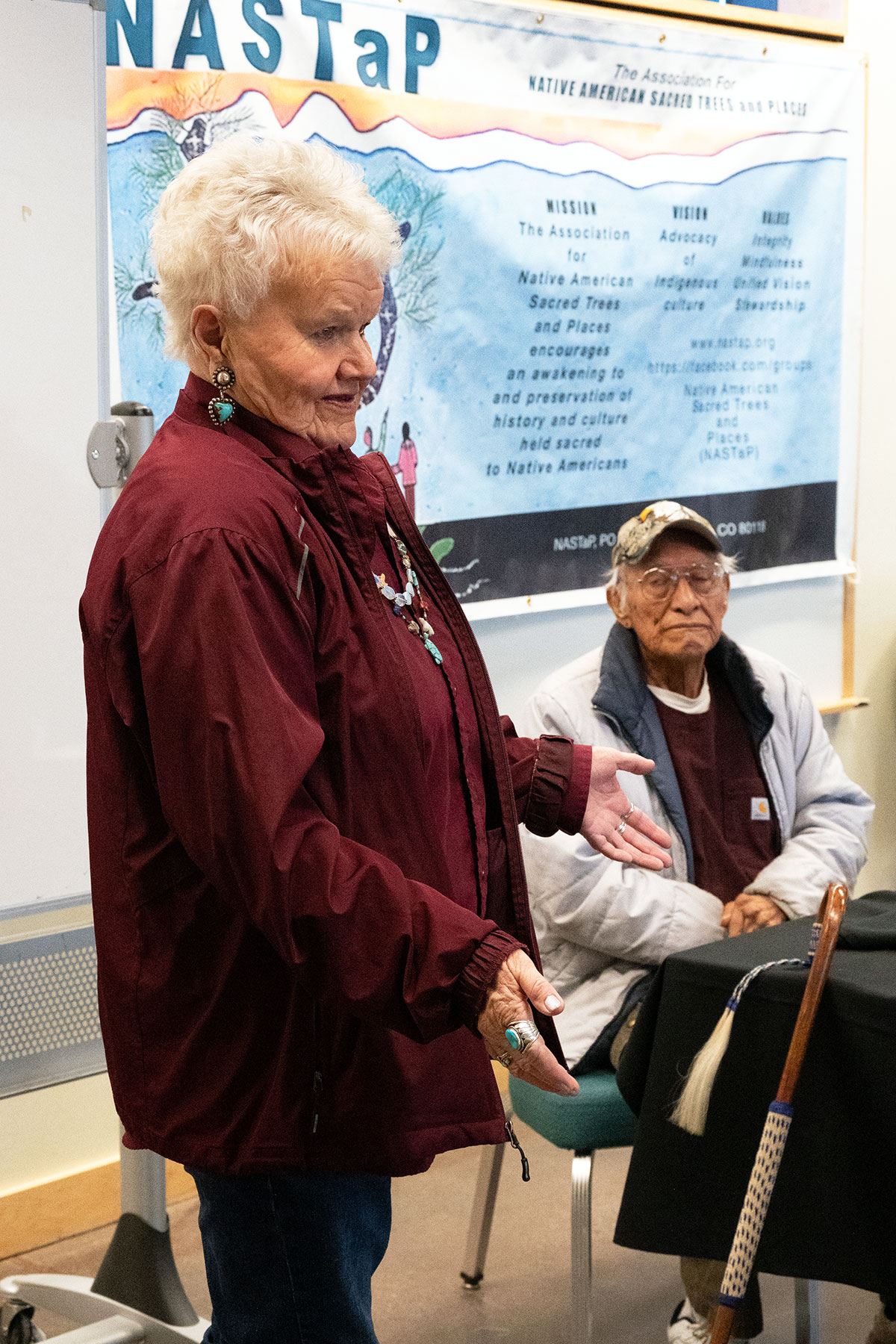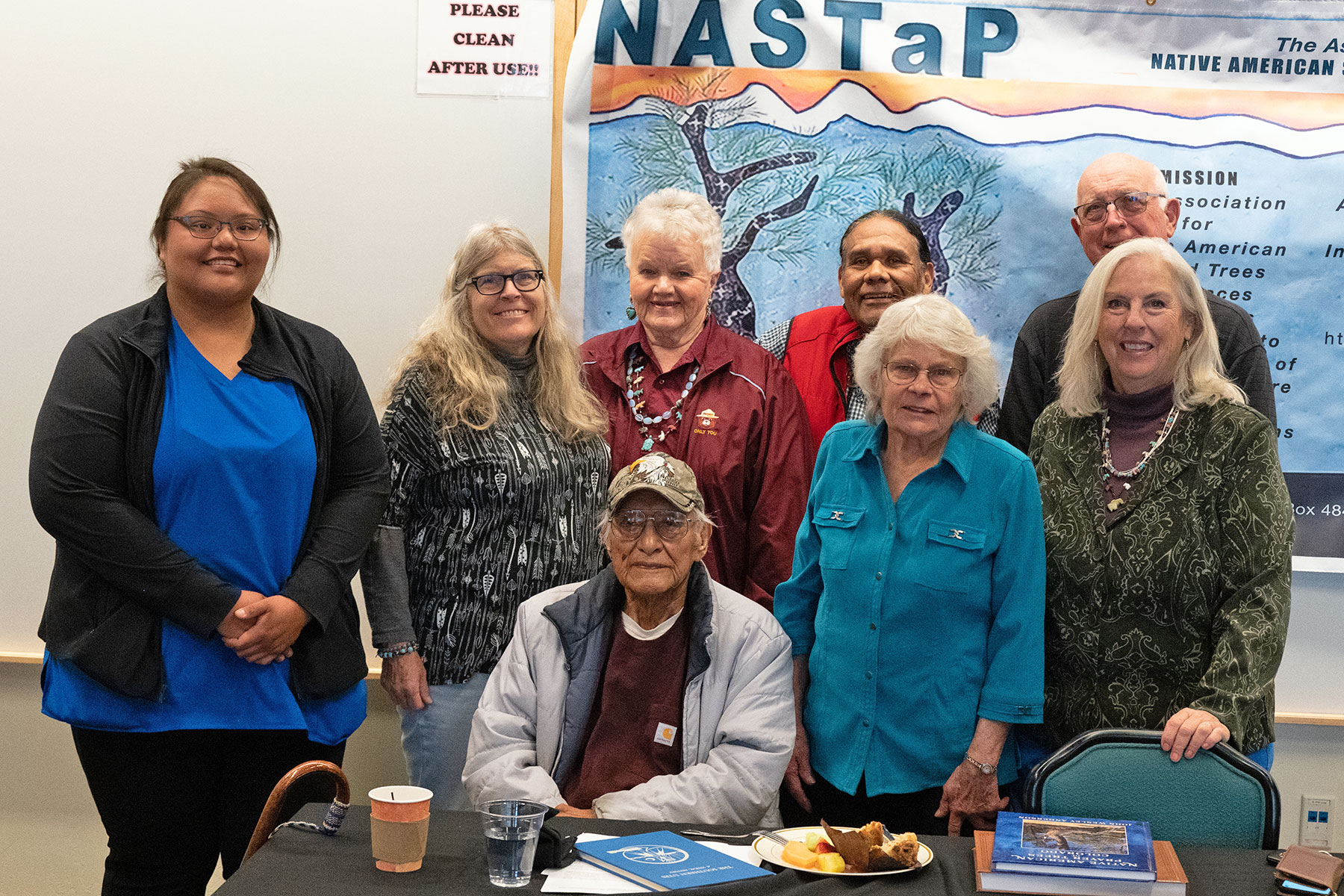Discussion of sacred trees and places
Members of the Native American Sacred Trees and Places (NASTaP) held their annual board retreat in Ignacio, Colo., April 28 – 30. The non-profit group met to discuss board functions, review bylaws, strategic goals and share with those present about their mission and share their own experiences. According to their Strategic Plan, their mission is “To inspire discovery, acknowledgement, and conservation of Native American scared places and culturally modified trees.”
The group believes that trees were “Culturally Modified Trees” or CMT’s, by Native Americans to use as land markers, and for purposes of prayer and ceremonies, whose purpose embraces; Cultural appreciation; Experiential learning; Multidisciplinary research; Inclusivity; Mentorship; and Stewardship.
NASTaP was founded in 2017 by Southern Ute elder, Dr. James Jefferson, John Anderson and Janet Shown, and the non-profit is headquartered in Larkspur, Colo.
“Dr. Jefferson and John Anderson, have been educating and trying to raise awareness about CMT’s and sacred places, throughout the U.S Canada and other place where these sites have been found,” said Shown.
There are opponents of NASTaP.
“Archeologists said this is not true. CMT’s was done by nature – but if it’s done all over the United States, Canada, South America and people identify that this is true. That’s what we are trying to find,” Dr. Jefferson said.
As stated by Dr. Jefferson, there are 573 registered tribes in the United States, every one of them has a culture. “I thought all medicine men, spiritual leaders knew about all of these things, but I guess I was wrong. Because they told me, ‘It is not in their culture.’”
The Ute Mountain Ute and Southern Ute Indian Tribes jointly submitted a letter denouncing the practice of Prayer trees, Sacred trees, Marker trees, Vortex trees, etc., submitted at the Colorado Commission of Indian Affairs quarterly meeting in 2019.
View the full letter online here https://www.sudrum.com/wp-content/uploads/2023/05/Official-SU-UMU-Statement-False-Cultural-Connection-June202019.pdf
Dr. Jefferson has taught the group throughout the years, about his memories of the elder’s teachings to Jefferson.
“Through the show-and-tell method, about these Native American culturally modified trees. Some had bark peels (where the bark had been removed), or cut to gather pitch, and others have been bent or shaped over generations,” said Shown.
The groups says they feel fortunate to have learned about the trees from Dr. Jefferson, through his ancestorial lineage, and hopes to engage more tribal members in telling of their memories of the CMT’s and to help spread awareness in the area.
In 2011, Nathan Winder (Strong Elk) then director of the Southern Ute Museum and Dr. Jefferson who was on the Museum board were first approached about the trees and asked for information about the [bent] trees.
“I have seen them in the forest, and when I talked to the old people about the trees. My first affiliation that I can remember with the trees was back in 1938-39,” said Jefferson.
Dr. Jefferson has met with elders of the Ute Mountain Ute Tribe and shared information about what NASTaP is doing.
Through stories told to him and through his own research and study, Dr. Jefferson has visited various sites and has identified trees, as CMT’s.
Patti Brady, volunteer for the National Forest Service (Durango/Pagosa Springs District) has worked with Dr. Jefferson for many years in the “Trailing the Trees of the Ancients,” as termed by NASTaP, has identified a tree in Turkey Creek, where Brady patrols as a “birthing tree”.
A birthing tree is believed by the NASTaP group to have been used during childbirth by Native Americans.
“The trees have been tied as a young seedling, with horse tail, [yucca braids] then causing the tree to shoot upwards,” said Brady.
“Mark Roper, GIS Officer has actually recorded several “ancient trees,” and has also recorded trees in the Upper Piedra,” said Brady.
Dr. Jefferson stated he has been gathering information to “pinpoint” dates, and what tribes inhabited the various areas where the CMT’s and sacred sites have been found.
“Through records I have gone through and what [information] we are getting, we can identify the tribe in the area. I am also working with the ‘Old Spanish Trail’ and getting help from them,” said Dr. Jefferson.
“The people out there have the stories, they’ve heard the stories, we have photos – as we come up with the stories, that are quite unique we will share with the articles we write,” said Jefferson.
NASTaP’s guiding principles state that: “No one person, tribe, or group has all the answers or is the single authority on Native American sacred trees and places. Together, we can conduct better research, identification, interpretation, documentation, education, and conservation. We strive for cultural appreciation, not appropriation. Our activities are inclusive of all tribes and non-native people who wish to research, discover, understand, share, appreciate, and conserve Native American sacred trees and places.”
“History is so broad and so wide, that no one person can study it,” said Dr. Jefferson.
In a book written by John Wesley Anderson, “A to Z Colorado’s Nearly Forgotten History 1776 – 1876” (Rhyolite Press LLC, 2021), Dr. Jefferson assisted Anderson with information for the book.
“Indians have a history, it is written history, but it is in the trees, in the rocks – the petroglyphs. The work I’m doing now, I named it ‘Indian Science and Western Science, because I am working with both of these,” said Dr. Jefferson.
The current project the group is asking for help with photos of CMT’s, “… although we already have a lot – if we can get the whole country to do the same thing, then we’ve accomplished a lot of things.”
The group has upcoming field trips planned to visit various sites in Colorado and New Mexico.
Visit www.nastap.org for more information.






